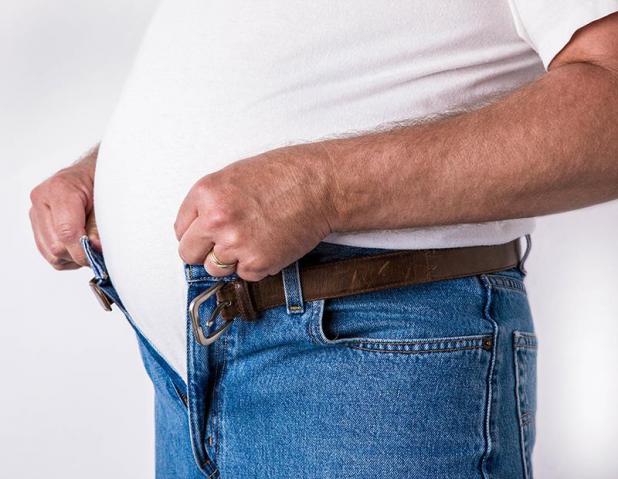
Louisiana metro cities make obesity list
Americans are some of the fattest people in the world, not just stereotypically but statistically, too. In fact, almost 40 percent of U.S. adults are obese.
Such a finding should come as no surprise, considering the huge availability of fast-food and increasingly cheaper grocery items that have negatively altered our diets. Unfortunately, the extra pounds have inflated the costs of obesity-related medical treatment to approximately $190.2 billion a year and annual productivity losses due to work absenteeism to around $4.3 billion.
Certain places are more responsible than others for tipping the scale in favor of bad health. To identify them, WalletHub compared 100 of the most populated U.S. metro areas across 19 key indicators of weight-related problems. Our data set ranges from share of physically inactive adults to projected obesity rates by 2030 to healthy-food access.
Overall fattest cities in the U.S. by rank are:
—1: McAllen-Edinburg-Mission, Texas;
—2: Shreveport-Bossier City;
—3: Memphis, Tennessee;
—4: Jackson, Mississippi;
—5: Knoxville, Tennessee;
—6: Tulsa, Oklahoma;
—7: Mobile, Alabama;
—8: Nashville-Davidson-Murfreesboro-Franklin, Tennessee;
—9: Columbia, South Carolina;
—10: Lafayette;
—11: Baton Rouge;
—12: New Orleans-Metairie;
—13: Oklahoma City, Oklahoma;
—14: Chattanooga, Tennessee;
—15: Little Rock-North Little Rock-Conway, Arkansas.
Ask the Experts
Fighting obesity requires a multi-level approach. We turned to a panel of experts for the best ways to address the problem, from the personal to policy level.
What are some tips for eating healthy without breaking the bank?
Katherine L. Tucker, professor at University of Massachusetts Lowell said, “Use dried beans for an excellent protein source along with whole grains like brown rice. Select fruits and vegetables that are in season and/or on sale. Make plant-based whole foods the center of your diet.”
What are the biggest mistakes people make when trying to achieve and maintain a healthy lifestyle?
“One can start by not eating too much and avoiding processed food choices,” said Charles Mueller, PhD, RD, CDN, CNSC, clinical associate professor of Clinical Nutrition, director of Didactic Program in Dietetics, Department of Nutrition, Food Studies at New York University Steinhardt School of Culture, Education, and Human Development.
What is the impact of obesity on the economy and worker productivity?
“The real impacts of obesity on the economy and worker productivity emerge not from body size, per se, but from the stigmatization of fatness,” said Evan L. Weissman, associate professor, Undergraduate Director and Minor Director, Syracuse University.
Should employers play a role in helping workers maintain a healthy lifestyle? How?
Nathan Drendel, MFN, RD, LD, assistant lecturer at The University of Toledo, College of Health and Human Services said, “Employers should have a role in helping their workforce maintain a healthy lifestyle, they shouldn’t force their workers to, but they should provide avenues for them to maximize their attempts at being healthy. Ways this can be done, and a lot of times employers are doing these things would be to create an environment that encourages physical activity, such as having on-site gyms, walking paths, etc.
“In terms of nutrition, employers can help their employees by also making sure their nutritional environment is conducive to eating nutritiously. Ways this can be accomplished are having access to refrigeration and heating appliances so employees can bring homemade leftovers or other nutritious foods and store them and prepare them appropriately which can cut down on feeling the need to have others (fast food, restaurants, etc.) make their meals for them. Another aspect is to provide daily nutritious snacks, think raw veggies and fruits rather than ‘fun’ snacks that should be kept for more special occasions. Those are just a few ways employers can nudge their employees toward a more healthful lifestyle.”
What policies should government pursue to fight obesity and lower the cost of health care?
“Those are very complicated discussions currently underway based on the evidence based research that offers the data needed to justify these costs/benefits,” said Linda V. Van Horn, chief of nutrition in the Department of Preventive Medicine, and professor of Preventive Medicine (Nutrition) at Northwestern University.
Methodology
In order to determine the fattest cities in America, WalletHub compared 100 of the most populated U.S. metro areas across three key dimensions: 1) Obesity & Overweight, 2) Health Consequences and 3) Food & Fitness.
We evaluated those dimensions using 19 relevant metrics, which are listed below with their corresponding weights. Each metric was graded on a 100-point scale, with a score of 100 representing the “fattest.”
We then determined each city’s weighted average across all metrics to calculate its overall score and used the resulting scores to rank-order our sample.
